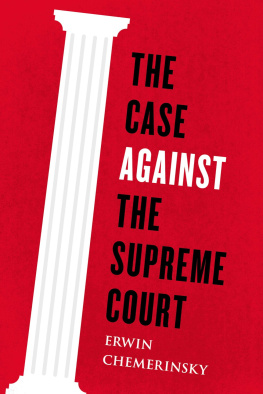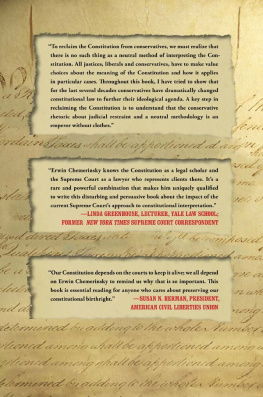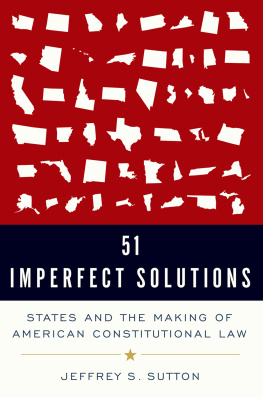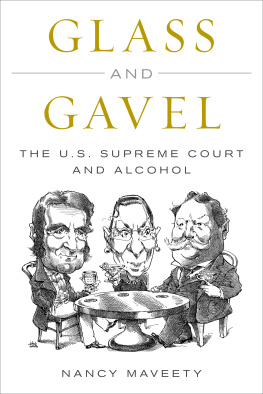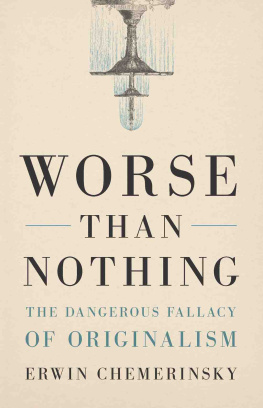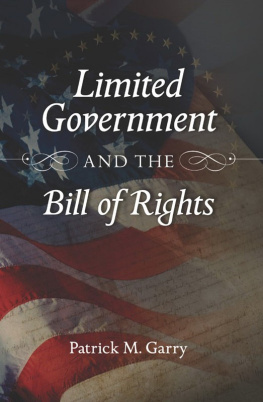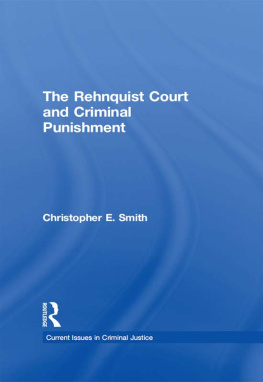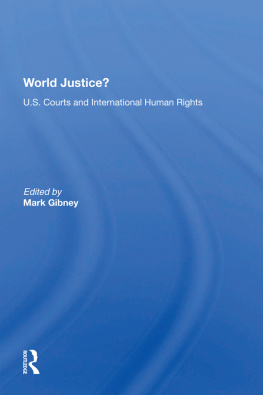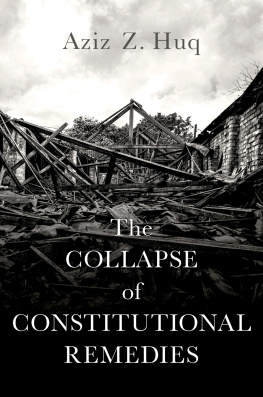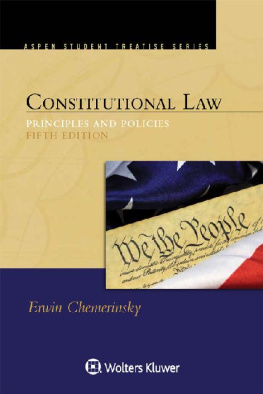Closing the Courthouse Door
Closing the Courthouse Door
How Your Constitutional Rights Became Unenforceable
ERWIN CHEMERINSKY
Yale UNIVERSITY PRESS/NEW HAVEN & LONDON
Copyright 2017 by Erwin Chemerinsky.
All rights reserved.
This book may not be reproduced, in whole or in part, including illustrations, in any form (beyond that copying permitted by Sections 107 and 108 of the U.S. Copyright Law and except by reviewers for the public press), without written permission from the publishers.
Yale University Press books may be purchased in quantity for educational, business, or promotional use. For information, please e-mail (U.K. office).
Set in Minion type by Newgen North America.
Printed in the United States of America.
ISBN 978-0-300-21158-0 (hardcover : alk. paper)
Library of Congress Control Number: 2016941955
A catalogue record for this book is available from the British Library.
This paper meets the requirements of ANSI/NISO Z39.481992 (Permanence of Paper).
10 9 8 7 6 5 4 3 2 1
For Catherine
Contents
Preface
I have been teaching constitutional law and federal courts for thirty-six years and have witnessed dramatic changes in the law. Many of these are familiar to lawyers and nonlawyers alike. The United States Supreme Court has held that corporations can spend unlimited amounts of money in election campaigns to get candidates elected or defeated. The Court has held that the Second Amendment protects a right of individuals to possess guns, at least in their homes for the sake of security. The Court has imposed limits on the application of the death penalty, preventing it from being used against the intellectually disabled or for crimes committed by juveniles or for crimes other than homicide. The Court has found that there is a constitutional right to marriage equality and that state laws prohibiting same-sex marriage are unconstitutional. Every year, in late June, the headlines are dominated by Supreme Court decisions that change the law and affect all of us.
But there are other Supreme Court decisions that significantly change the law and affect all of us that receive far less publicity. Over the decades since I became a law professor, the Supreme Court has made it far more difficult for those who are injured, even egregiously and horribly hurt, to have access to the federal courts. In case after case, year after year, the Supreme Court has closed the courthouse doors to those whose rights have been violated. The Court increasingly has held that state and local governments cannot be sued for their constitutional violations, that government officers who violate peoples rights are immune from liability, that injured individuals lack standing to sue in federal court, that those convictedeven wrongly socannot be heard in federal court, that suits and especially class action suits are barred by language in form contracts requiring arbitration.
These, though, are decisions about procedural doctrinessovereign immunity, Bivens suits, absolute and qualified immunity, standing, habeas corpus, abstentionthat are unfamiliar to most nonlawyers and even many attorneys. These are not cases that gain the attention of the media. But rights are meaningless if they cannot be enforced. Closing the courthouse doors to those whose rights have been violated has the same effect as if the rights did not exist at all. The only difference is that the Court decisions rejecting rights get headlines, while rulings dismissing cases on these procedural grounds garner little attention.
My goal is to explain how the Supreme Court, through a series of doctrines and decisions, has closed the federal courthouse doors to those whose rights have been violated. I want readers to see how these rulings affect real people, and ultimately all of us. My vision, as explained in the first chapter, is that federal courts should be available to all who claim a violation of their constitutional rights. Above all, the federal courts exist to enforce the Constitution. In this book, I seek both to describe the Supreme Courts rulings that close the federal courthouse doors and to prescribe concrete solutions to ensure that those who have been injured are assured of their days in court.
My hope is that my analysis and proposals are ones that conservatives and liberals alike can embrace. Access to justice should be non-ideological in that all from every part of the political spectrum should be able to accept its importance. Yet, I also am aware that most of the decisions that I am criticizing in this book had the conservative justices in the majority. For decades, conservative justices have achieved their goal of narrowing rights by keeping federal courts from hearing cases and providing relief.
Perhaps I am unduly optimistic that liberals and conservatives can reconsider these cases and doctrines and reason from the same basic premise: The preeminent role of the federal courts is to enforce the Constitution, and doctrines which prevent this should be reexamined and changed.
As I wrote this book, I had in mind as a title, Enforcing the Constitution: The Role of the Federal Courts. This expresses my central thesis, developed in the chapters that follow: the most important role of the federal courts is to enforce the Constitution; many doctrines created by the Supreme Court prevent the federal courts from fulfilling this mission; and these should be changedby Court decision and legislative action. This book is a product of over three decades of frustration, as a professor and as a lawyer, with a Supreme Court that has lost sight of the basic reason for having federal courts and of the need to ensure that the Constitution is enforced. It is a book that is written in the fervent hope and belief that this can and must be changed to ensure that the Constitutions most important guarantees will have meaning in the years and decades ahead.
ONE
Why Do We Have Federal Courts?
In 2014, the United States Court of Appeals for the District of Columbia Circuit dismissed a lawsuit brought by a dozen current and former sailors and Marines who had been severely sexually harassed or raped while in military service. It described this resolution of the case as easy.
Ariana Klay was one of the plaintiffs. While she was an active duty lieutenant in the U.S. Marine Corps, her fellow Marines gang-raped her at her home, a few blocks away from the Marine barracks in Washington, D.C. Apparently, one of Klays colleagues felt that she had embarrassed him in front of a group of Junior Marines. That Marine and a friend, a former Marine, showed up at Klays house one day around 5:00 in the morning and raped her in retaliation.
Klay testified that in the months before the rape, she was constantly sexually harassed. From her first day of military service, she said that she and the other women in the barracks were treated with hostility by her fellow Marines. She described the culture in the barracks as vile. When she reported the harassment to her superior, he told her to deal with it and refused to take any action.
The Marine Corps investigation implied that because Klay wore skirts (which were regulation-length and part of her uniform) and makeup, and exercised in tank tops and running shorts, therefore she had invited and welcomed the harassment. During the pretrial hearing on the rape in the military court, Klay was questioned for sixteen hours, during which she repeatedly was asked inappropriate and humiliating questions. The prosecuting attorney made no objections on Klays behalf. The court eventually ruled, mostly on the basis of the two perpetrators testimony, that the sex was consensual and that there had been no rape. Afterward, because she had complained about the incident, the harassment grew so severe that Klay at one point attempted suicide.
Next page

